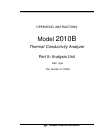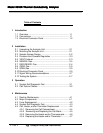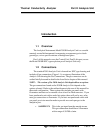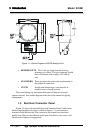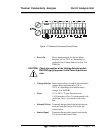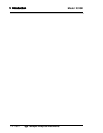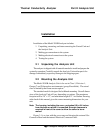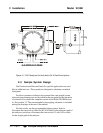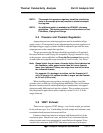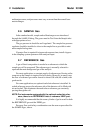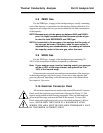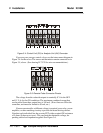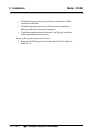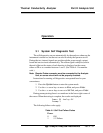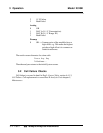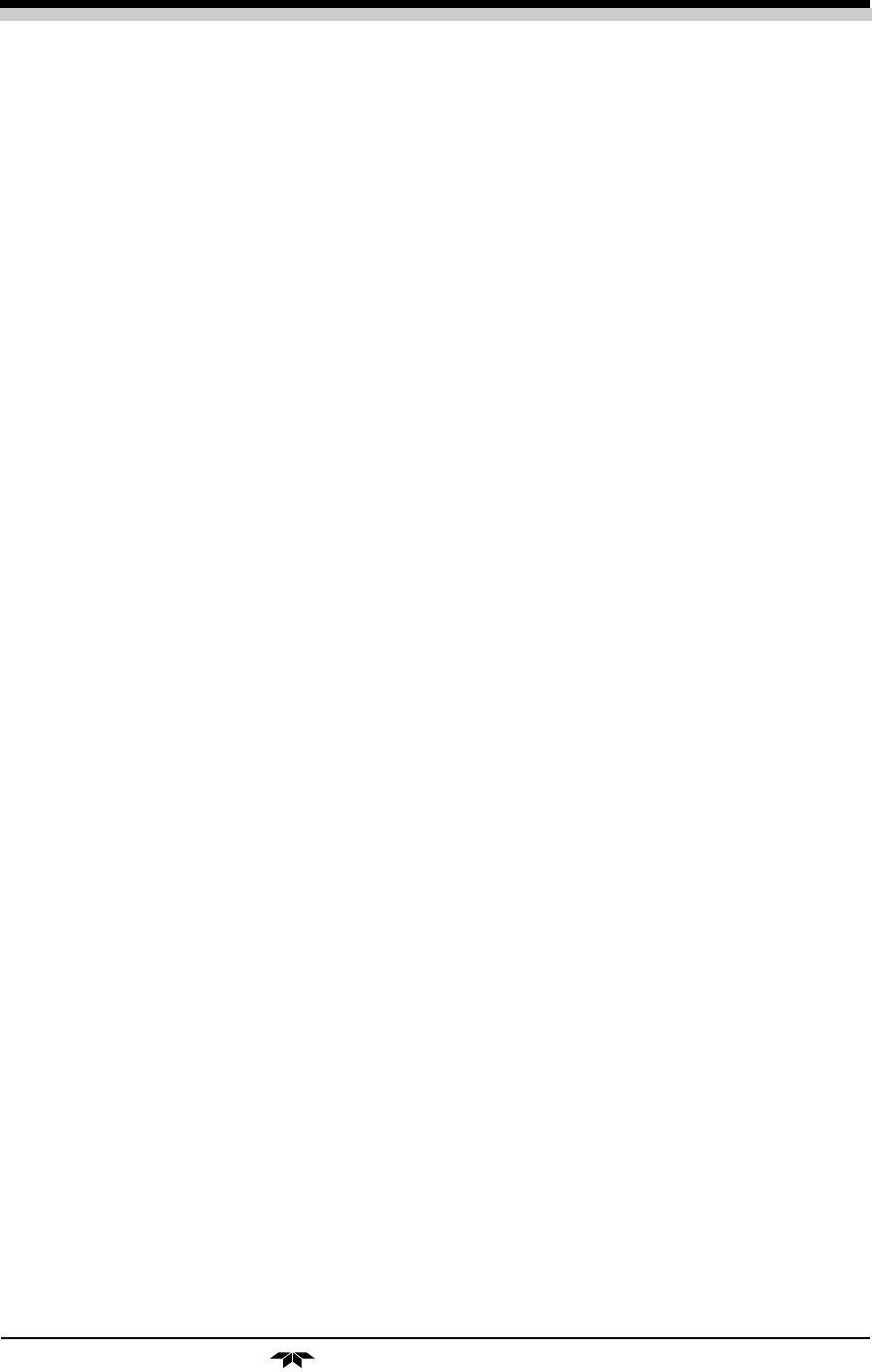
Thermal Conductivity Analyzer Part II: Analysis Unit
Teledyne Analytical Instruments Part II: 2-3
NOTE: The sample-line pressure regulator should be installed as
close to the sample point as possible to minimize sample-
line lag time.
NOTE: An additional option is available for SEALED reference
application. This option would not have the reference Gas
Flow Meter, Piping and Fittings.
2-4 Pressure and Flowrate Regulation
Appropriate pressure reducing regulators must be installed at all gas
supply sources. To minimize flowrate adjustments the pressure regulators on
the supporting gas supply cylinders should be adjusted to provide the same
output pressure as the sample line regulator.
The gas pressure at the IN input should be reasonably well regulated.
Pressures between 5 and 50 psig are acceptable (10 psig is normal) as long
as the pressure, once established, will keep the flow constant during analy-
sis and within an acceptable range (between 0.1 and 0.4 scfh—See Note).
Note: Gases lighter than air have a flowrate higher than indicated on
the flowmeter, while gases heavier than air have a flowrate
lower than indicated. Values can range from one half to twice
the indicated flowrate.
For example: For hydrogen or helium, set the flowrate to 0.1
scfh (50 cc/min). For carbon dioxide or argon, set the flowrate
to 0.4 scfh (200 cc/min).
When installing pressure regulators on supply cylinders, crack the
cylinder valves so that gas is flowing during installation. This will eliminate
the most common cause of standardization-gas contamination: air trapped
during assembly diffusing back into the cylinder. This procedure is particu-
larly important in applications where impurity content of 1 to 2 % is the
range of interest.
2-5 VENT Exhaust
There are two separate VENT fittings—one for the sample gas and one
for the reference gas. Use
1
/4 inch tubing for both sample and reference vents
to minimize back pressure from restricted flow.
Exhaust connections must be consistent with the hazard level of the
constituent gases. Check local, state, and federal laws, and ensure that the
exhaust stream vents to an appropriately controlled area if required. If not
vented to the same area, both VENT lines must vent to areas with equal



